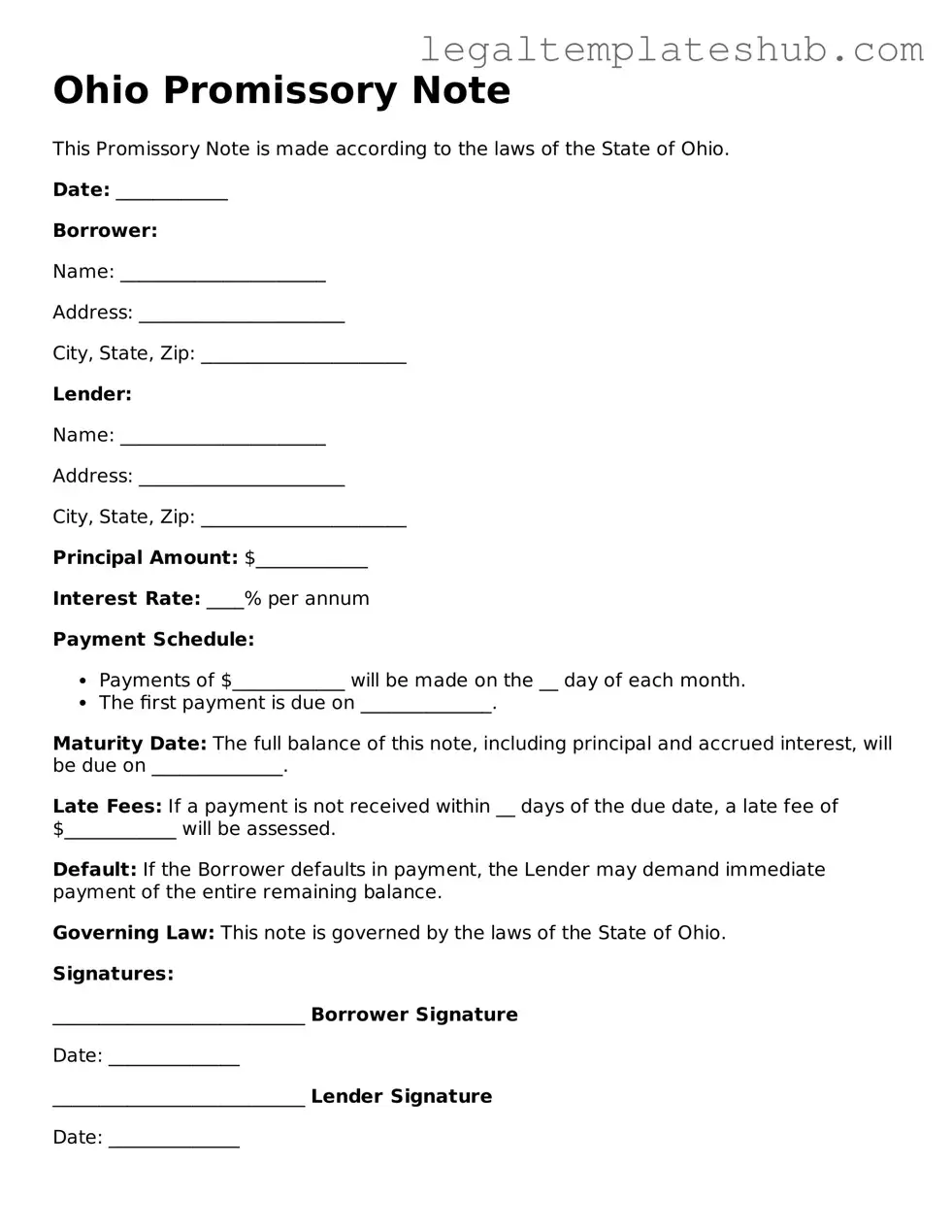Printable Promissory Note Document for Ohio
A promissory note is a written promise to pay a specified amount of money to a designated person or entity at a future date or on demand. In Ohio, this form serves as a crucial document for establishing the terms of a loan agreement between a borrower and a lender. Understanding the components of the Ohio Promissory Note can help ensure that both parties are clear about their obligations and rights.
Ready to create your own Ohio Promissory Note? Fill out the form by clicking the button below.
Access Editor
